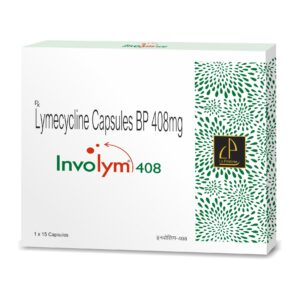LYMECYCLINE
LYMECYCLINE: LYMECYCLINE is an antibiotic drug that belongs to the tetracycline class. It is primarily used to treat various bacterial infections, including acne vulgaris.
The mechanism of action of LYMECYCLINE involves inhibiting the growth and multiplication of bacteria by blocking their ability to produce essential proteins. This is achieved by binding to the 30S ribosomal subunit of the bacterial cells, preventing the attachment of aminoacyl-tRNA to the mRNA-ribosome complex.
LYMECYCLINE is usually prescribed as an oral medication and is typically taken once or twice a day. The recommended dose varies depending on the indication being treated. For acne vulgaris, the typical starting dose is 408 mg per day, divided into two separate doses. The duration of treatment can vary but is often several months.
While LYMECYCLINE is generally well-tolerated, it can cause some side effects. Common side effects may include gastrointestinal symptoms such as nausea, vomiting, abdominal pain, and diarrhea. It may also cause photosensitivity, making the skin more sensitive to sunlight. Rare but serious side effects may include severe allergic reactions, liver dysfunction, and blood disorders.
It is important to note that LYMECYCLINE should not be taken by pregnant women, nursing mothers, or children under the age of 12. It may also interact with certain medications, such as antacids, iron supplements, and oral contraceptives, reducing their effectiveness. Therefore, it is essential to inform the healthcare professional about all other medications being taken to avoid any potential drug interactions.
Overall, LYMECYCLINE is an effective antibiotic for treating bacterial infections, particularly acne vulgaris. However, it is crucial to follow the prescribed dose and duration of treatment and to be aware of potential side effects and drug interactions.

